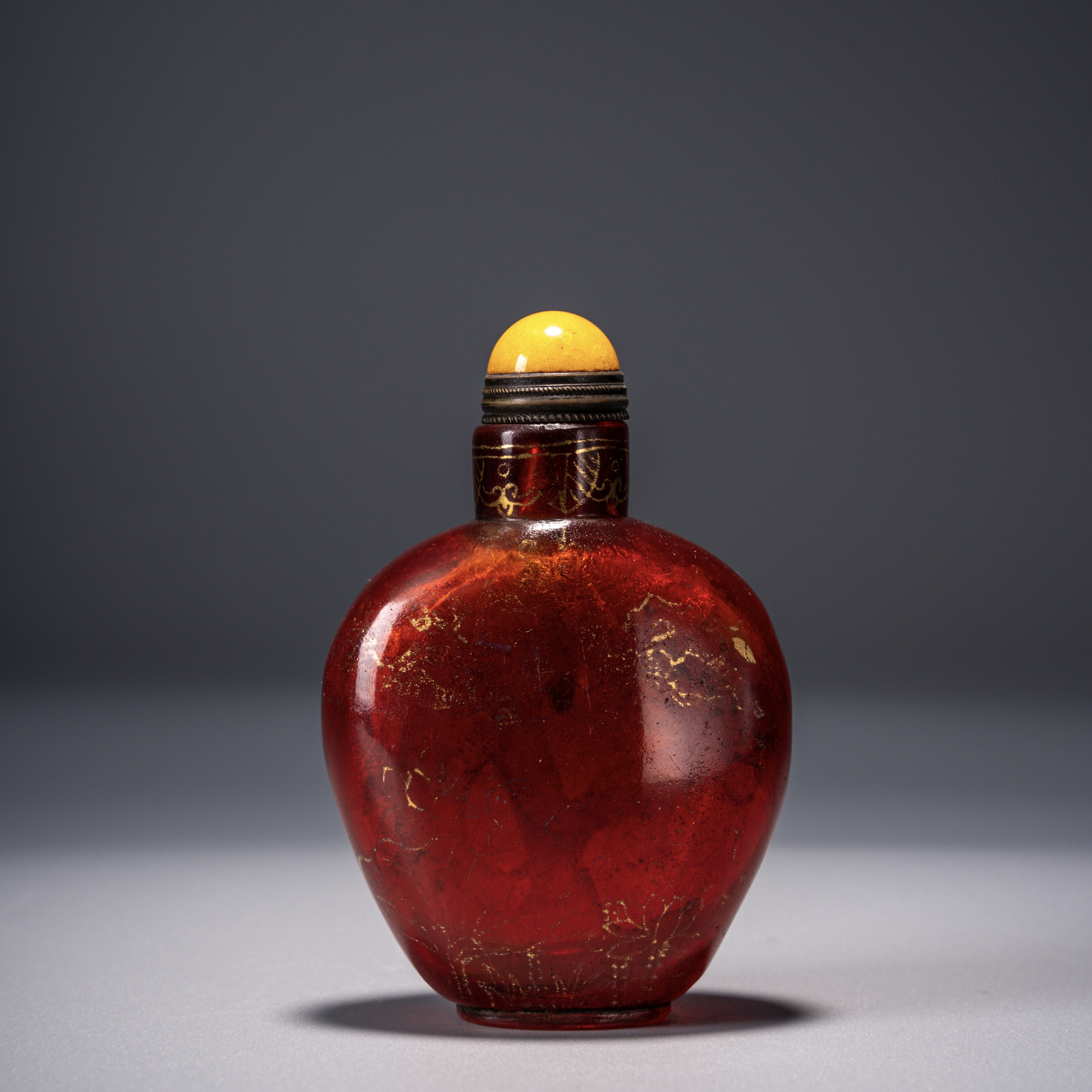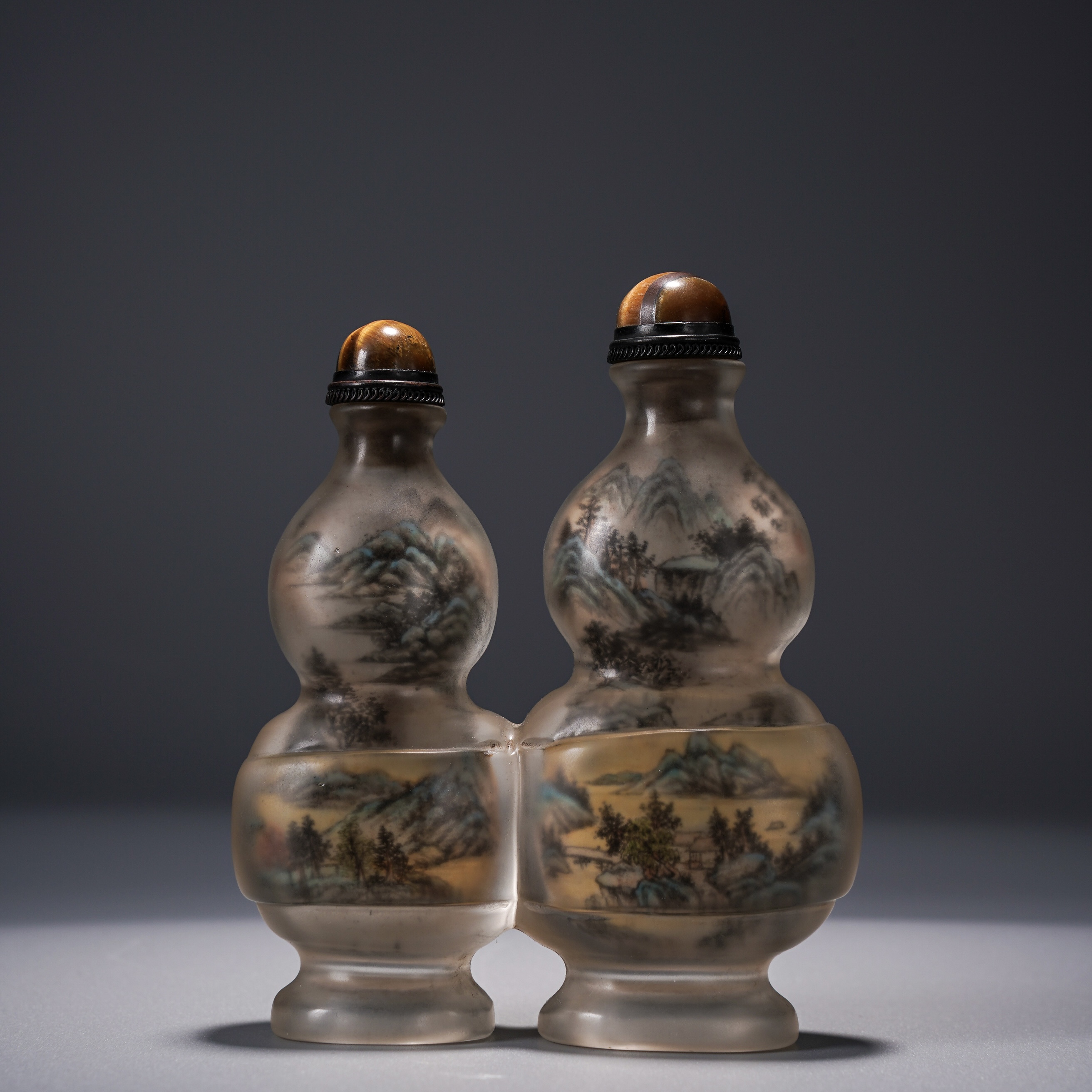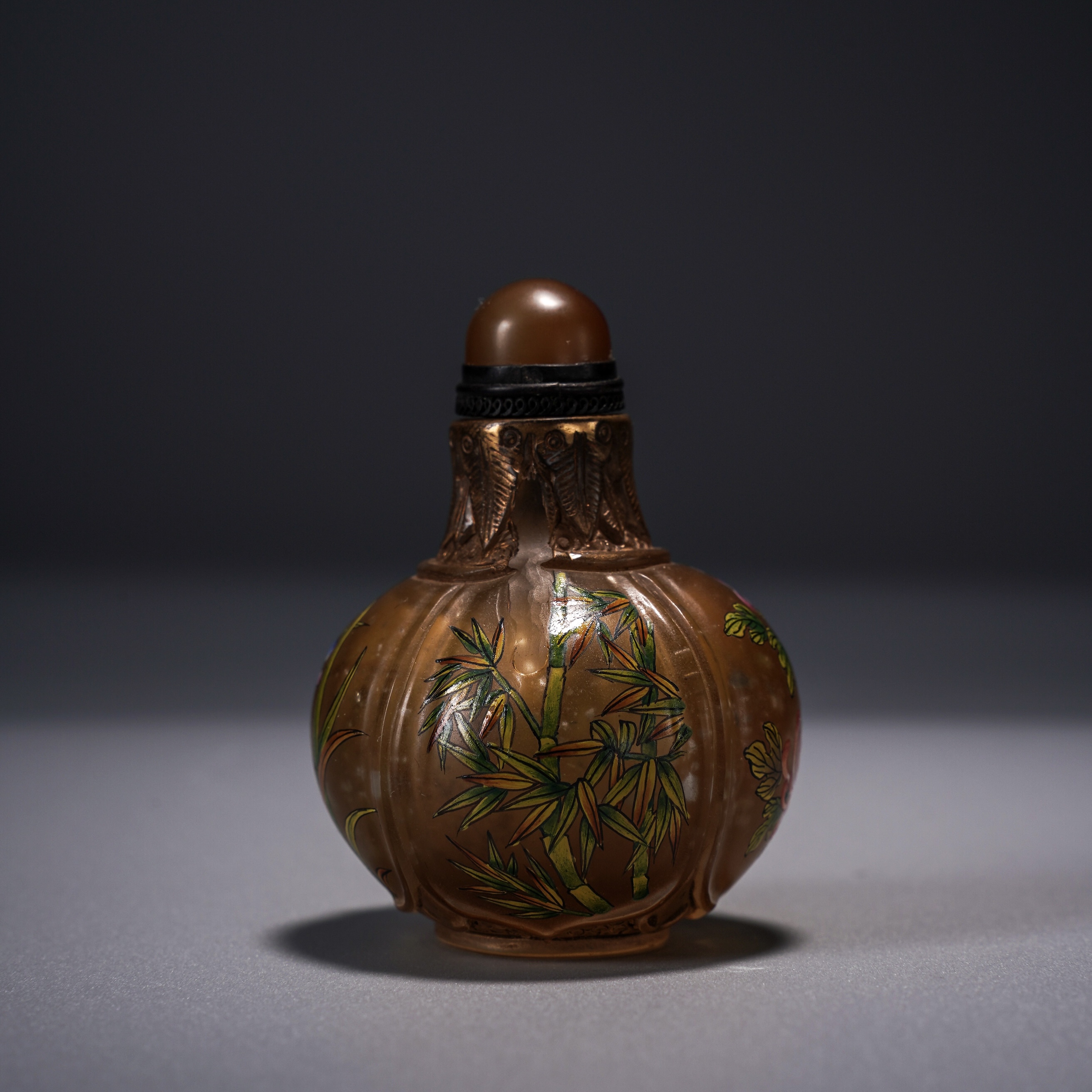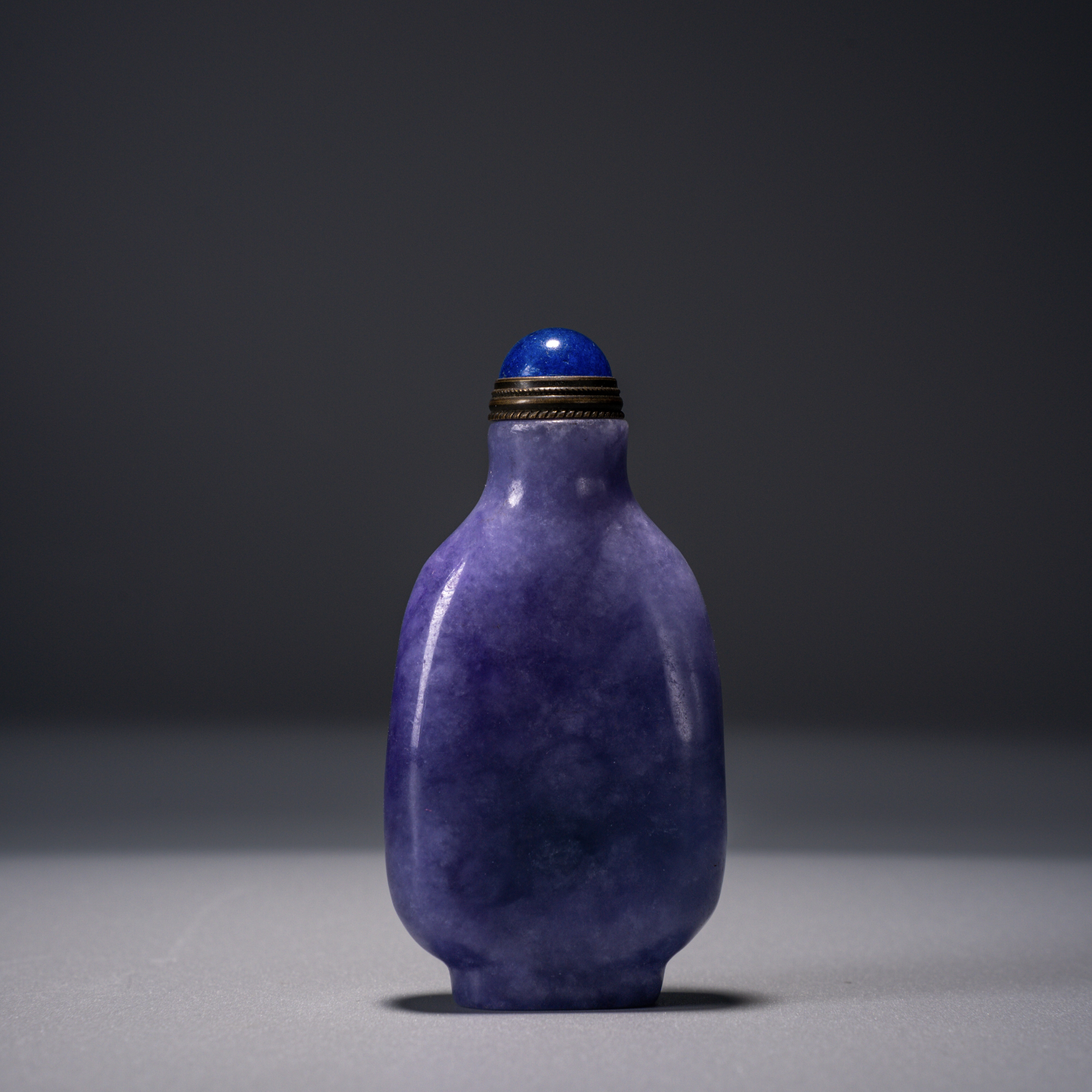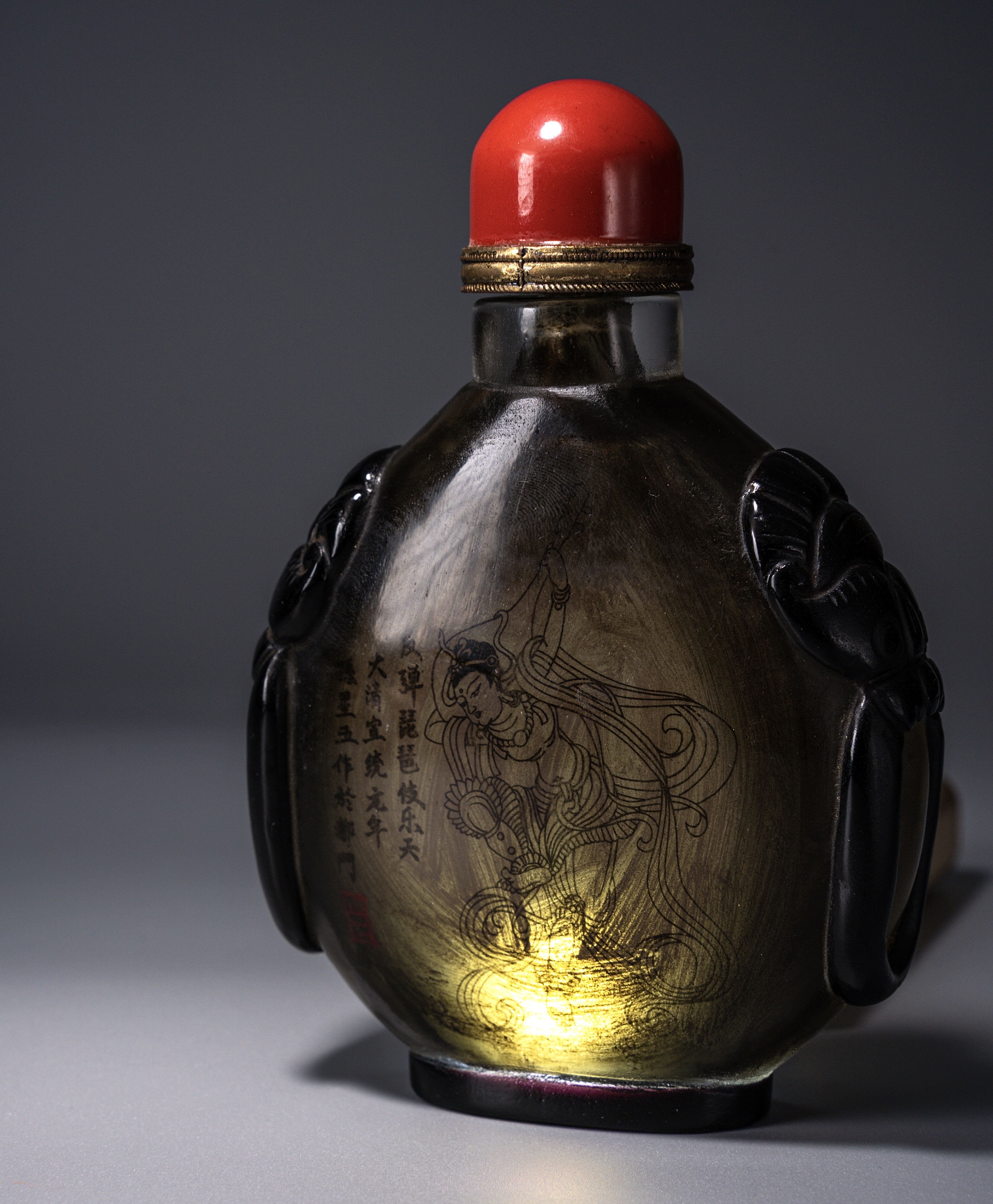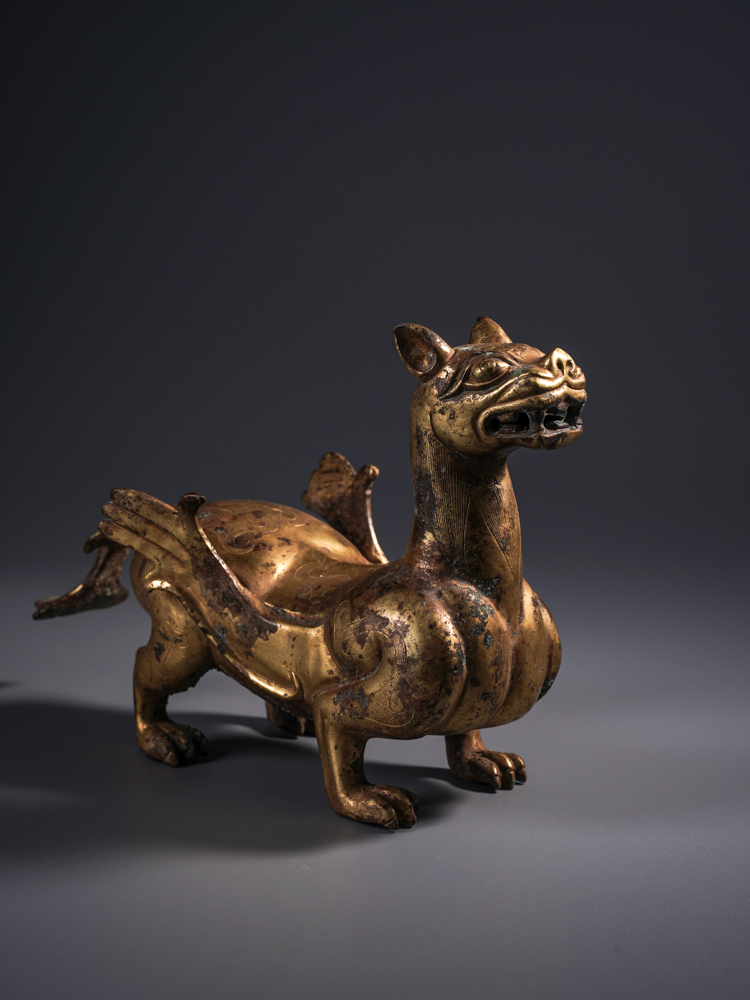About snuff bottles, the late qing dynasty painter and calligrapher zhao zhiqian had written a special book ‘yonglu leisure jie’, describes the origin of snuff bottles, development, texture, category, etc., the book called snuff bottles for ‘shi na hu 薄士’(snuff-box). Guangxu, Zhang Yishu wrote ‘Shi Na supplementary interpretation’, on Zhao Zhiqian ‘Yonglu leisure jie’ to make additions, said the snuff bottle for ‘Shi Na Hu Batulu’ (snuff-bottle), it can be seen that the snuff bottle from the West into, and in the Qing dynasty widely popular.
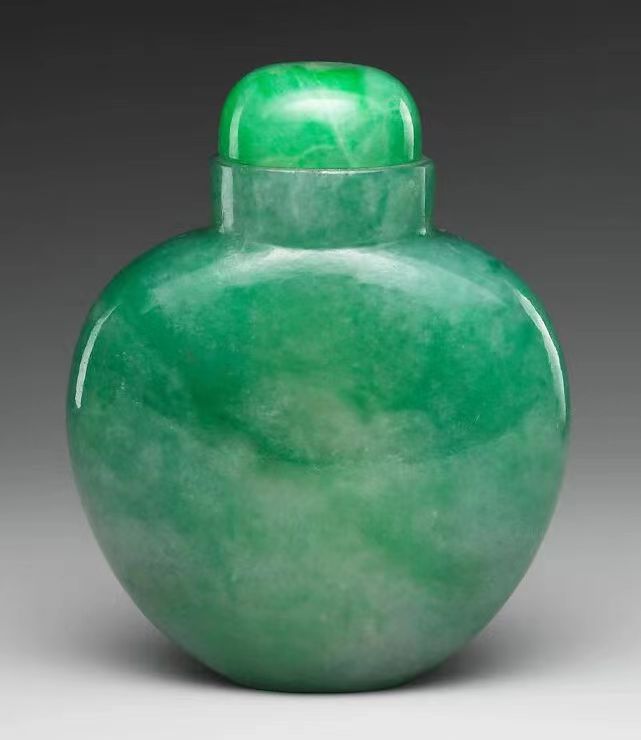
清 翡翠鼻烟壶
Snuff is made from finely ground tobacco, mixed with precious herbs and sealed in wax pills and aged for years or even decades, and is said to be effective in improving eyesight, refreshing the mind, avoiding epidemics, and invigorating the blood.
Tobacco, an important ingredient used in the production of snuff, is not native to China, but originated in the Americas. It was only after Columbus discovered the New World that tobacco gradually spread around the world.
Matton M. Curtis of the Royal Society of Arts in 1935, published in New York, ‘the history of snuff and snuff bottles’, said that on 12 October 1492, the Spanish navigator Columbus arrived in El Salvador, the local Indians gave Columbus a precious gift is tobacco.
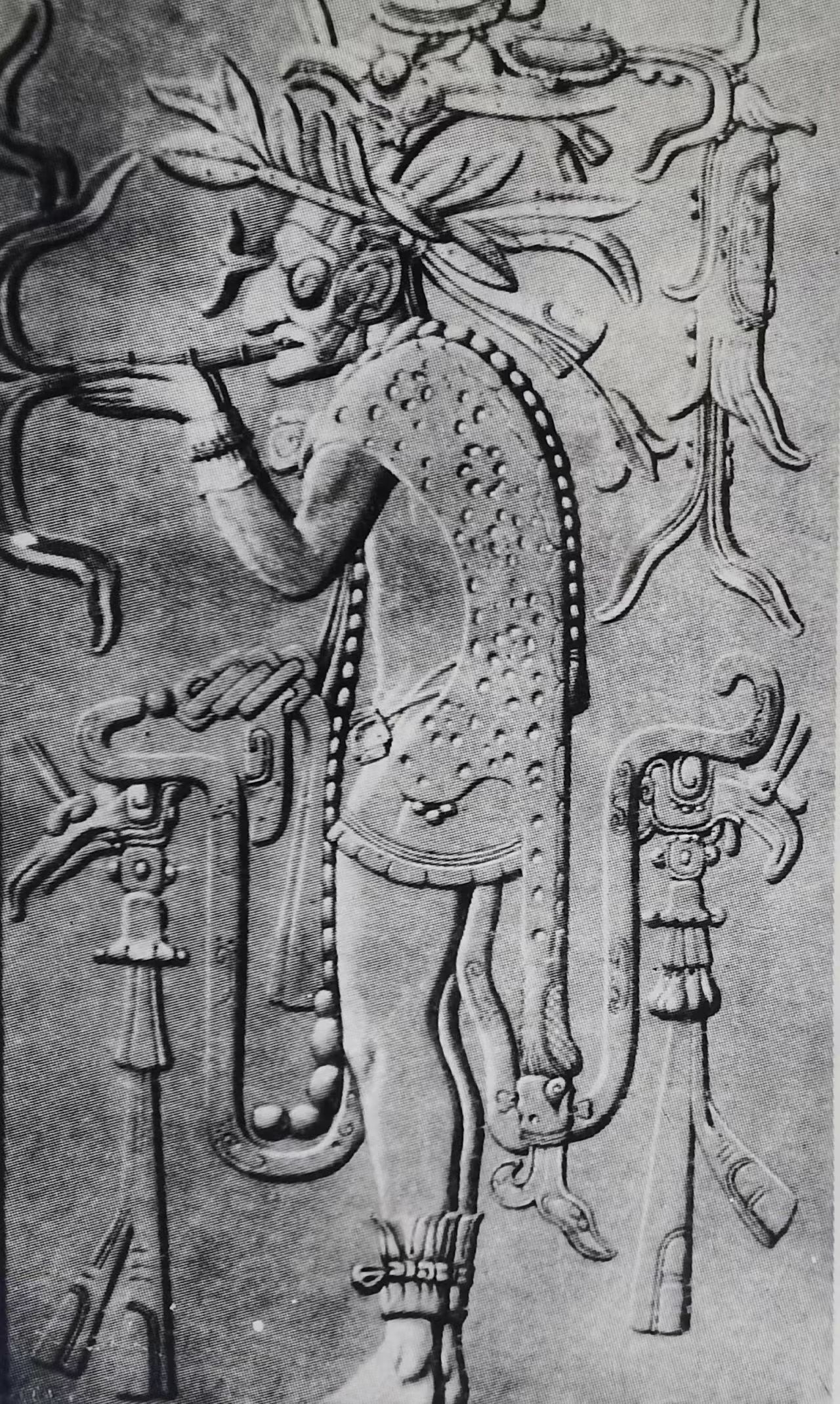
玛雅文化石刻
抽烟的祭司
More than 2,000 years ago, tobacco was already abundant on the American continent, and the Indians of the ancient Mayan nations burned it to honour their most revered sun god. The Indians also used a mortar and pestle made of rosewood to crush tobacco and add vanilla plants to make aromatic snuff.
After the 16th century, almost a global trend of sniffing snuff, especially prevalent in Europe and the United States court and the upper class aristocracy. It is said that Napoleon had an important habit of carrying a snuff box with him. Because he often had an attack of a disease, the onset of coughing, choking, making him very painful, at this time he could only through the sniffing snuff to ease the pain. Palace craftsmen for his production of a variety of exquisite snuff box, and the recipe for French snuff is also unique, by the American tobacco, French spices, salt, soda, red wine, cream, syrup, juice and other concoctions.
Navigators, missionaries, and soldiers quickly brought tobacco and snuff to all corners of the world, England, Germany, Italy, Austria, Holland, and Russia without exception. Cologne, Germany became the centre of the snuff trade in Europe, and the king and his ministers were required to smoke during their meetings, which became known as the ‘Tobacco Society’. Later, it was changed to snuff to avoid fire.
German writer Kohlhausen in the ‘nose longing for greed’ wrote: ‘the whole world has risen a ridiculous, ridiculous custom - sniffing snuff. People of all countries and all classes sniff snuff, from the noblest emperors to the lowest paupers.’
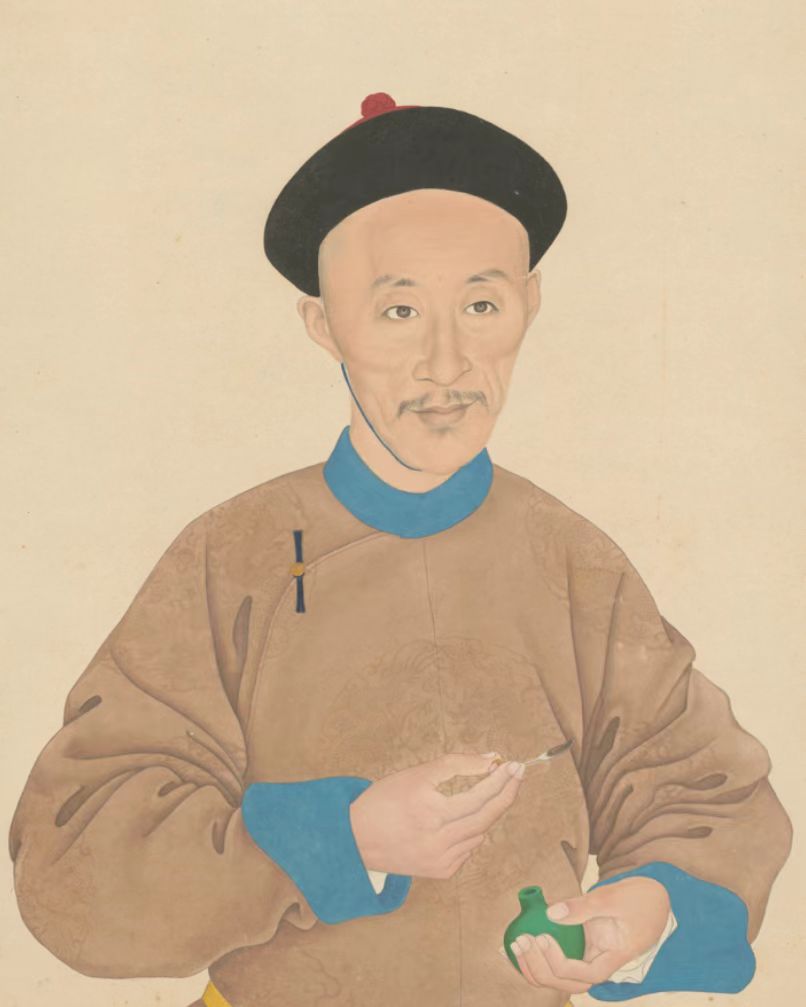
道光帝常服像
During the Wanli period of the Ming Dynasty, tobacco was introduced from the Americas to Fujian via Luzon (present-day Luzon Island in the Philippines), where it was known as tobacco in Chinese. European navigators described in their travel journals how the Guangzhou people smoked from pipes, long pipes with a pipe at the top to hold the tobacco. Some pipes were longer than the smoker, and they were amazed that a servant had to wait on them while they smoked.
The Mongols and Manchus of northern China preferred snuff, perhaps because smoking was not suitable for people on horseback, and snuff was much more convenient. They used the horns of bison and yak to make snuff bottles and decorated them with silver. In order to adapt to life on horseback, they also used silver chains to connect the lid to the body of the pot.
British scholar John Hedley (Hedley) published in London in 1910 in the book ‘in the dark Mongolia long-distance hiking’ book, said that all the Mongols sniff snuff. Whenever a guest visits, the host must bow and offer the snuff bottle with both hands. The guest, in turn, must take the snuff bottle with both hands, carefully pour out a small amount of snuff, inhale it, and then return it with both hands.
This, says Hertley, is ‘a very small but elegant ritual, like the clinking of glasses in the West when drinking wine’.
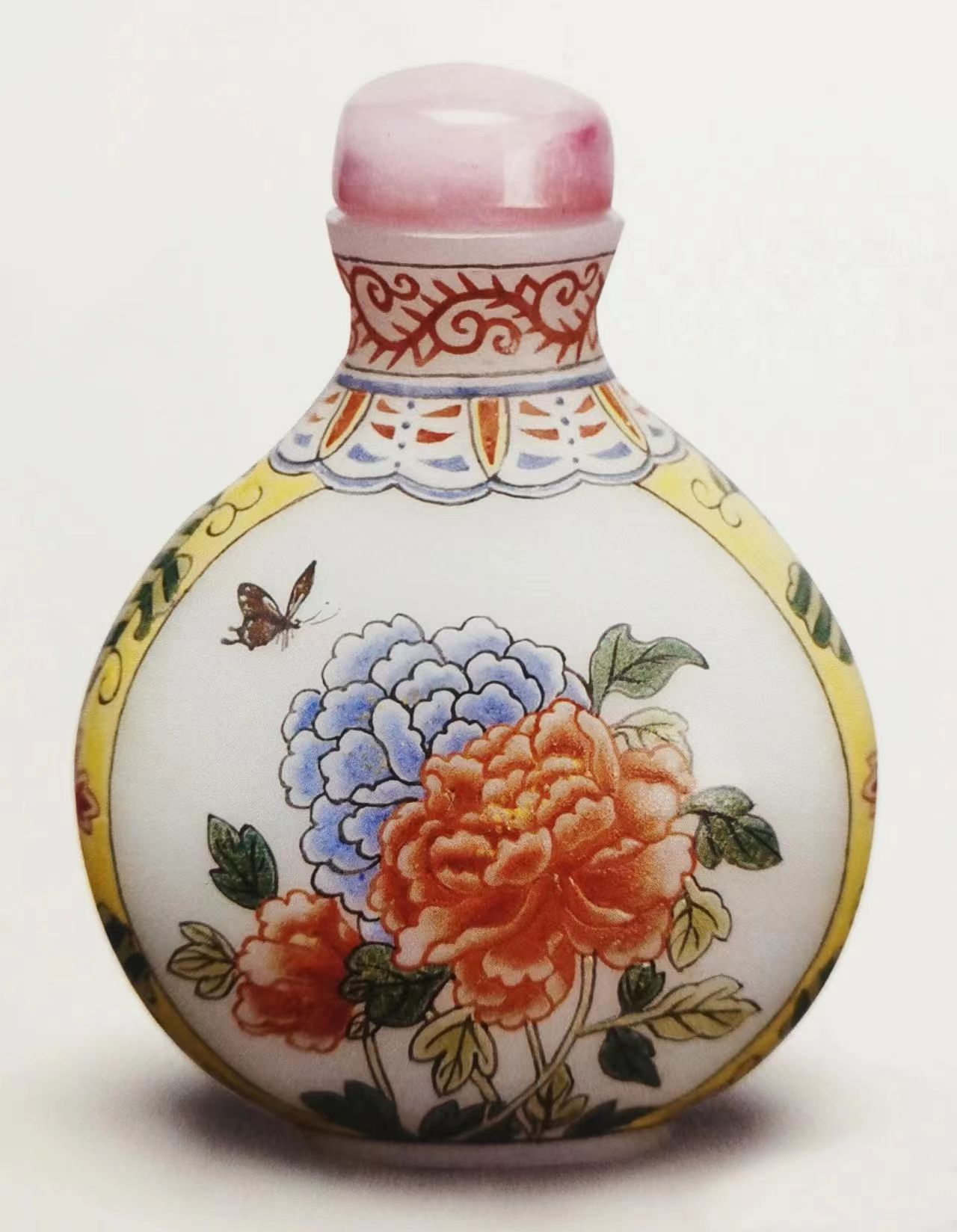
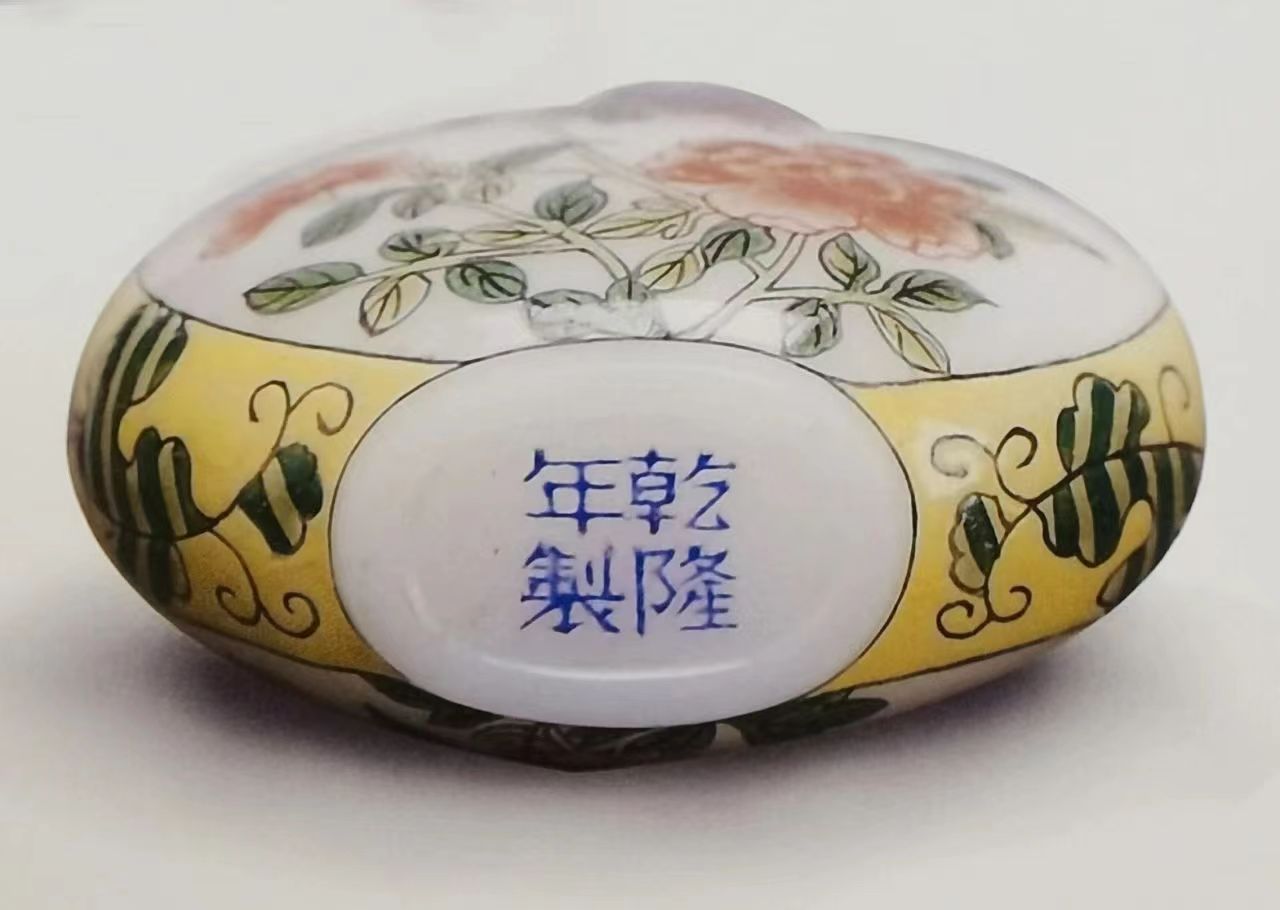
“乾隆年制“款料胎画珐琅花卉鼻烟壶
Tobacco, snuff, although in the Ming Dynasty Wanli years has been introduced to China, but then not popular. The popularity of snuff from the court down is the Kangxi Emperor of the Qing Dynasty. Kangxi Emperor is an extremely intelligent and diligent emperor, he actively study western astronomy, geography, geometry, mathematics, architecture, painting and other subjects, at the same time will be a variety of languages, in addition to Manchu, Tibetan, Mongolian, Chinese, but also English, Russian, French, German, etc., foreign envoys to visit, he was able to use a foreign language to receive, it is really a proper hegemony ah!
Kangxi Emperor has a strong interest in snuff and snuff bottles from the West, according to the forty-fourth year of the Kangxi Emperor (1705) by Wang Shizhen, ‘Xiang Zu notes’ in the record: ‘Near the capital and there are made for snuff, cloud can be bright eyes, especially the power of the epidemic, to glass for the bottle storage. Bottle of the image of all kinds of different, the colour also has red, purple, yellow, white, black, green, white as crystal, red as fire Qi, very lovely to play. Ivory as a spoon, on the nose to sniff, but also in the bottle, all made by the Ministry of the Interior.’
When Western missionaries first came to China, they sold tobacco, snuff and snuff bottles for huge profits, and also gave Western items such as snuff bottles and clocks to eunuchs and princes as a way to get through to China.
In the 23rd year of the Kangxi reign (1684), the Kangxi Emperor received snuff from local missionaries in Nanjing during his southern tour. Kangxi forty-three years (1704), the emperor received the papal legate Duo Luo, presented Duo Luo a crystal snuff bottle.
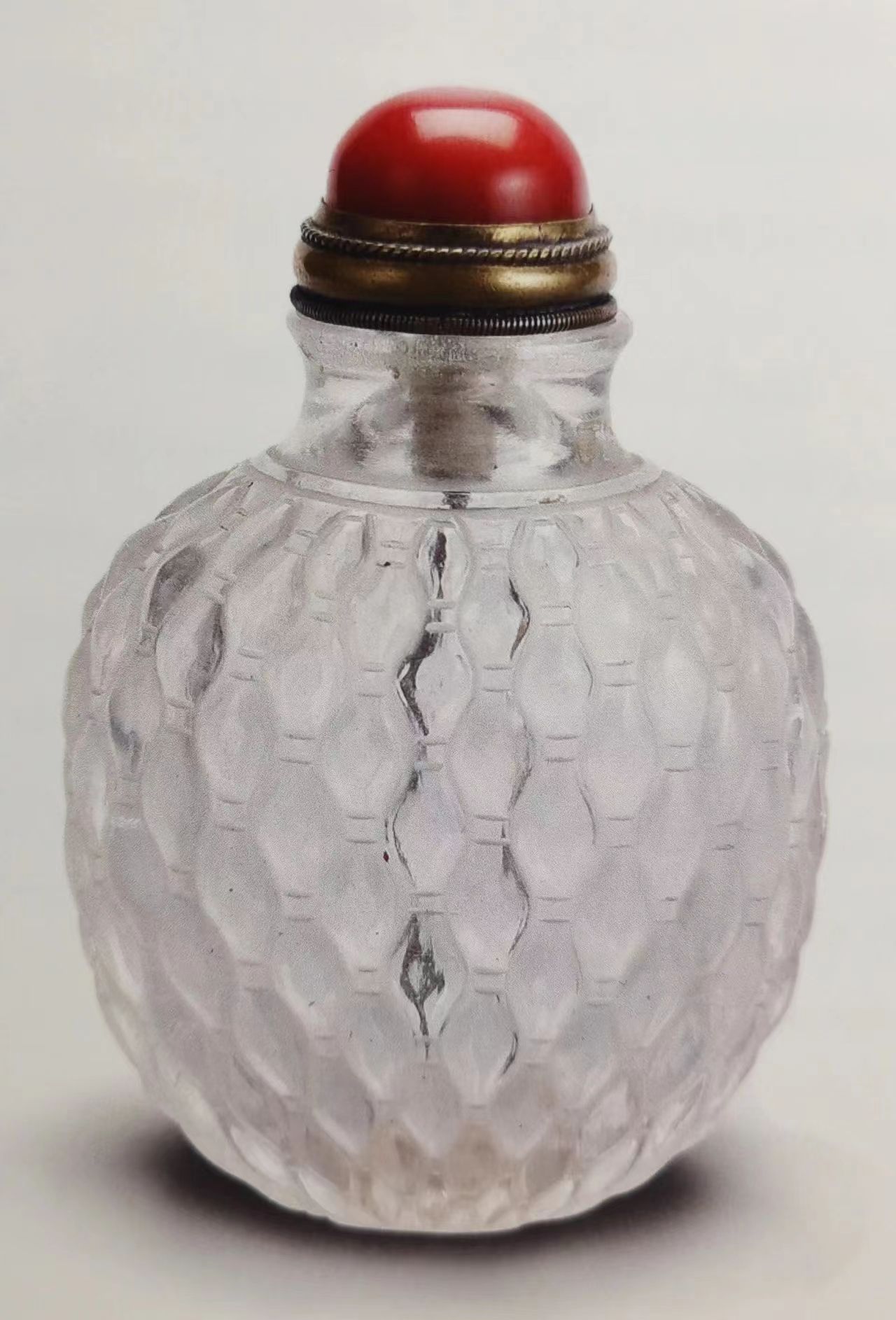
水晶鼻烟壶
This custom is still very popular in the Yongzheng, Qianlong, Yongzheng three years (1725), the Italian Pope Bernardito XIII sent an audience with Emperor Shizong of the Qing Dynasty, brought eleven ivory snuff bottles, a pair of silver snuff bottles, carnelian snuff bottles, as well as fifty pots of snuff.
The Qing Palace Office is an important place for the production of snuff bottles, the Kangxi Emperor invited the Western glassmaker to guide the glass factory, the production of glass snuff bottles. He also invited French enamellers to come from far and wide to the Qing Palace to guide the enamelling of snuff bottles.
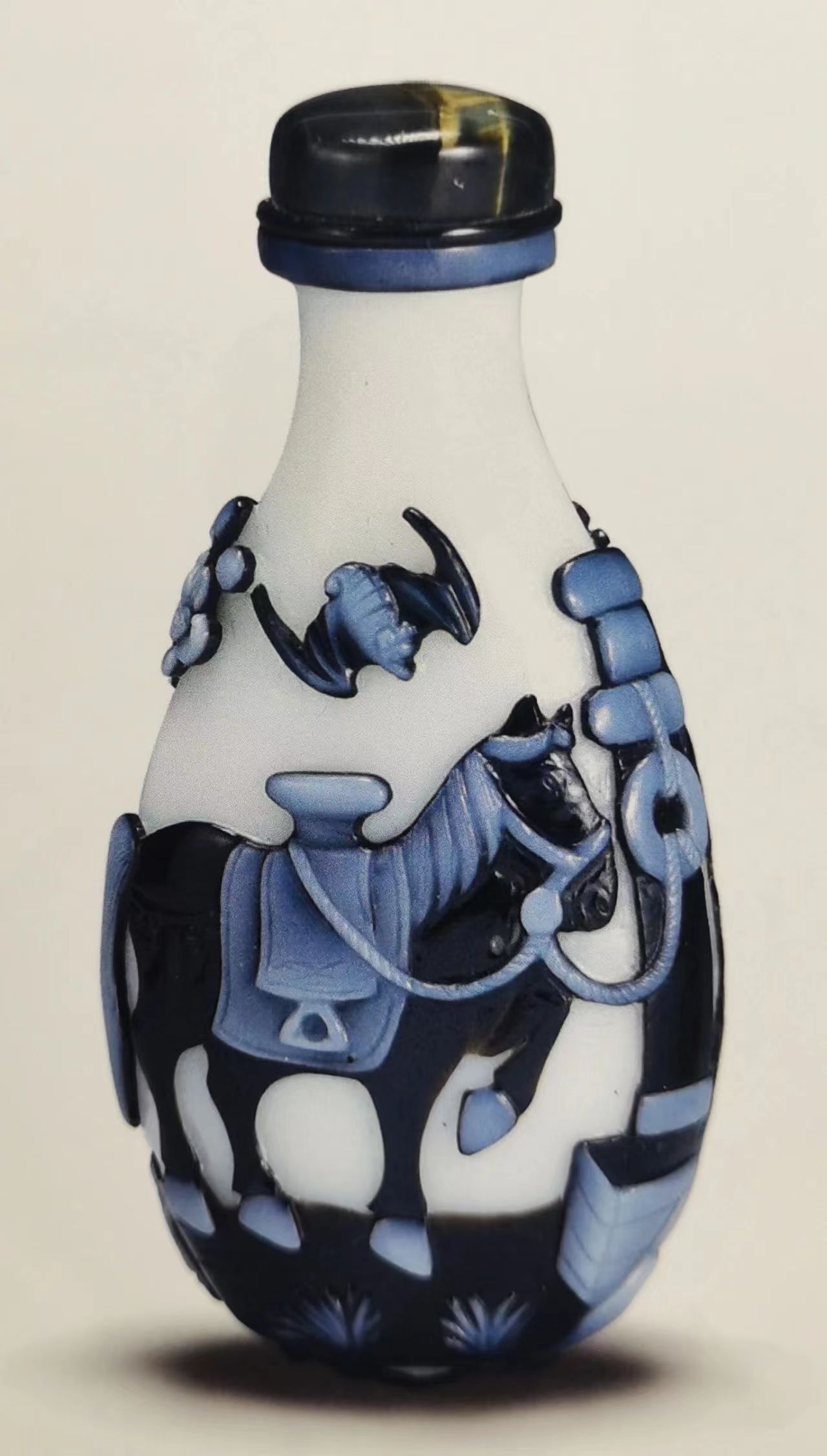
双色套料鼻烟壶
According to the ‘incense ancestor notes’ records, the Kangxi years court popular material snuff bottles, from a single colour gradually developed to a variety of colours. Initially white, and divided into glass, pearl, grease, Jixue, lotus root pink, giant clams and other colours, and then there are red, blue, purple, yellow, green, aventurine and other new varieties.
Later, in the lotus root pink material tire decorated with red, blue and other different colours of colour material, and cut and crushed into a variety of patterns, lively, attractive, this is the famous ‘set of material’.
Emperor Qianlong is a passion for art, and actively involved in the production of the emperor, he will snuff bottle varieties from simple porcelain, material, enamel, etc. to white jade, ivory, rhinoceros, amber, coral, onyx, jadeite, crystal, bamboo roots, Lagenaria, lacquer, etc. Various, dazzling.
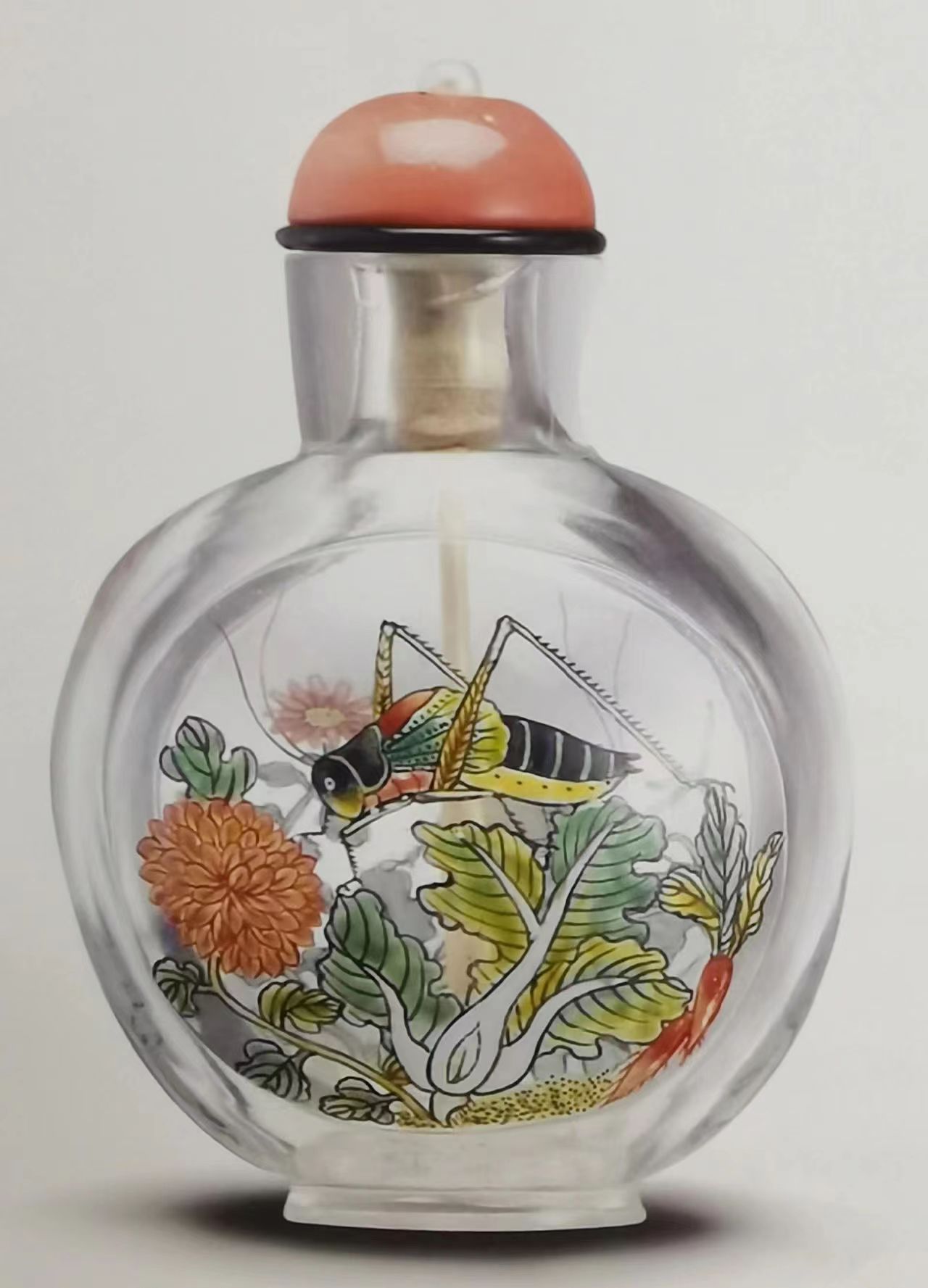
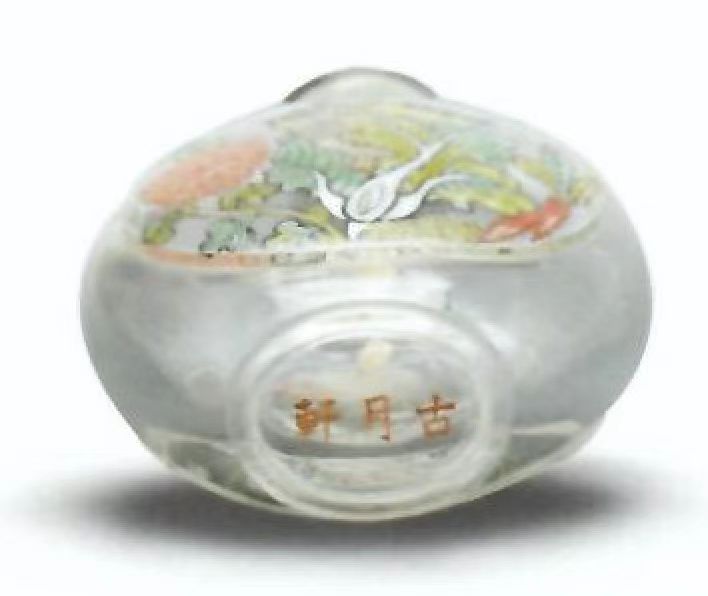
“古月轩“款玻璃胎画珐琅鼻烟壶
Qing dynasty Gu Yue Xuan is a mysterious existence, Zhao Zhiqian ‘Yonglu leisure Zizi’ in the description: ‘in the five-coloured giant clams on the glass painting colour, between the inscription of small poems, the foot inscription “Gu Yue Xuan” paragraph to the inscription of the “Qianlong year system” is particularly good. ’
What is the origin of the ‘Gu Yue Xuan’, so far there are different opinions. Some say that there is a master craftsman surnamed Hu, very good at painting material snuff bottles, paintings very fine, a moment, the Qing Emperor ordered to imitate it in porcelain. Because the painter surnamed Hu, so named ‘Gu Yue Xuan’.
Some say that the ancient moon Xuan is the Qing court collection of porcelain boutique Xuan name, Kangxi, Yongzheng, Qianlong years of the most fine porcelain are hidden in this. However, Chinese and foreign scholars examined the Qing Dynasty Imperial Palace, Yuanmingyuan and Shenyang, Chengde and other places in the Palace, have not found the ancient moon Xuan this place.
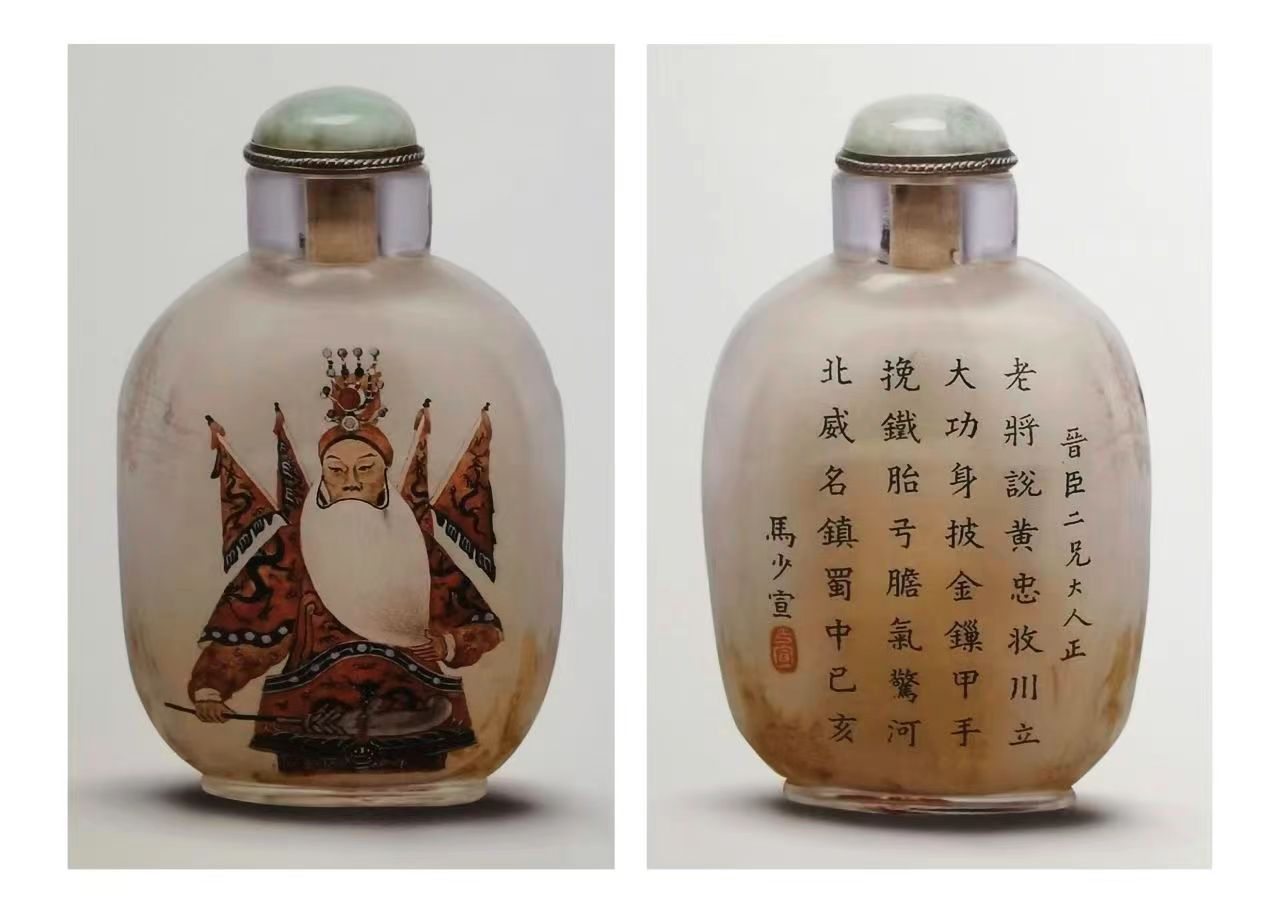
马少宣绘“黄忠像”内画壶
About inside-painted snuff bottles, it is said that the rise of the Qianlong to Jiaqing period. According to legend, at the end of the Qianlong period, a local official who was addicted to snuff went to the capital to do some work, and because he did not bribe the court officials, the matter was delayed again and again, and in the end, he ran out of money, so he could only stay in a temple.
This small official is addicted to snuff as a fetish, after the snuff bottle of snuff run out, he has no money to buy, only to keep using a stick to pull out the residual snuff on the wall of the pot, the result of the inner wall of the many traces of the drawing.
This scene was seen by a monk in the temple, he was inspired to use a bamboo stick with a curved hook, dipped in ink and then extended into the transparent material pot, painting on the inner wall. This is the legend of the origin of the inner painting pot.
During the Guangxu period, Beijing's famous pot craftsman Zhou Leyuan, Ma Shaoxuan, Zhang Baotian, Ye Zhongsan, Chen Kunsheng and others.
Zhou Leyuan was originally a lantern painter, living in Xuanwumen, self-appointed ‘idol book Xuan’, ‘Xuannan room’. He was highly educated in literature and painting, and many of his works are now treasured in the United States, Switzerland and other countries.
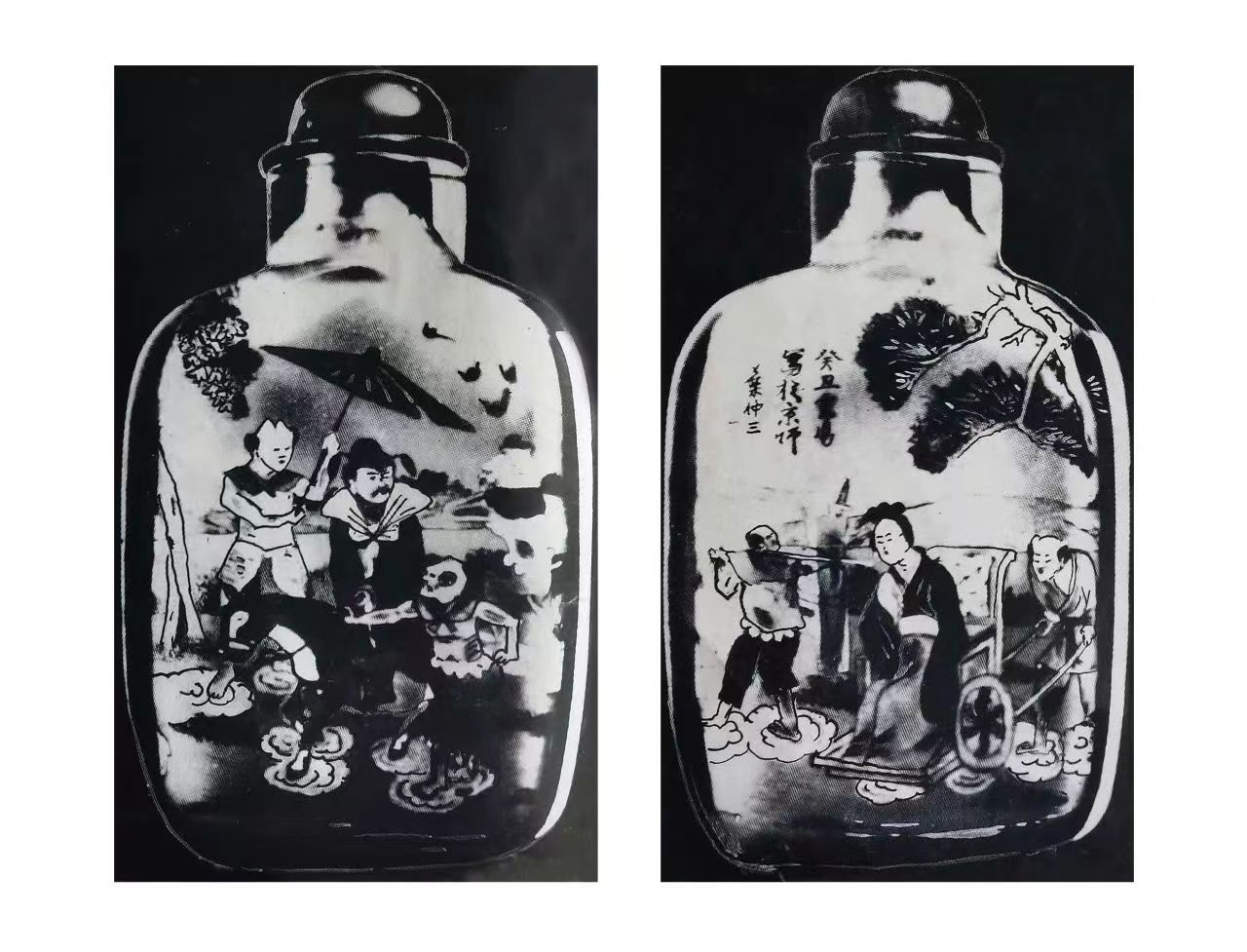
叶仲三绘 钟馗嫁妹水晶内画鼻烟壶
Ye Zhongsan's works have been widely circulated overseas, and the crystal inside-painted pot of Zhong Kui marrying his sister was made in 1913, with Zhong Kui on one side of the snuff bottle and Zhong Kui's sister on the other, the images echoing each other in a cleverly conceived manner.
Ma Shaoxuan's portrait of King Wilhelm II, created in the second year of the Xuantong period (1910), features a portrait of the king on the front and an inscription in German on the back by Ma Shaoxuan, ‘His Majesty King Wilhelm II of Germany, Ma Shaoxuan, Beiping, China, 1910’.
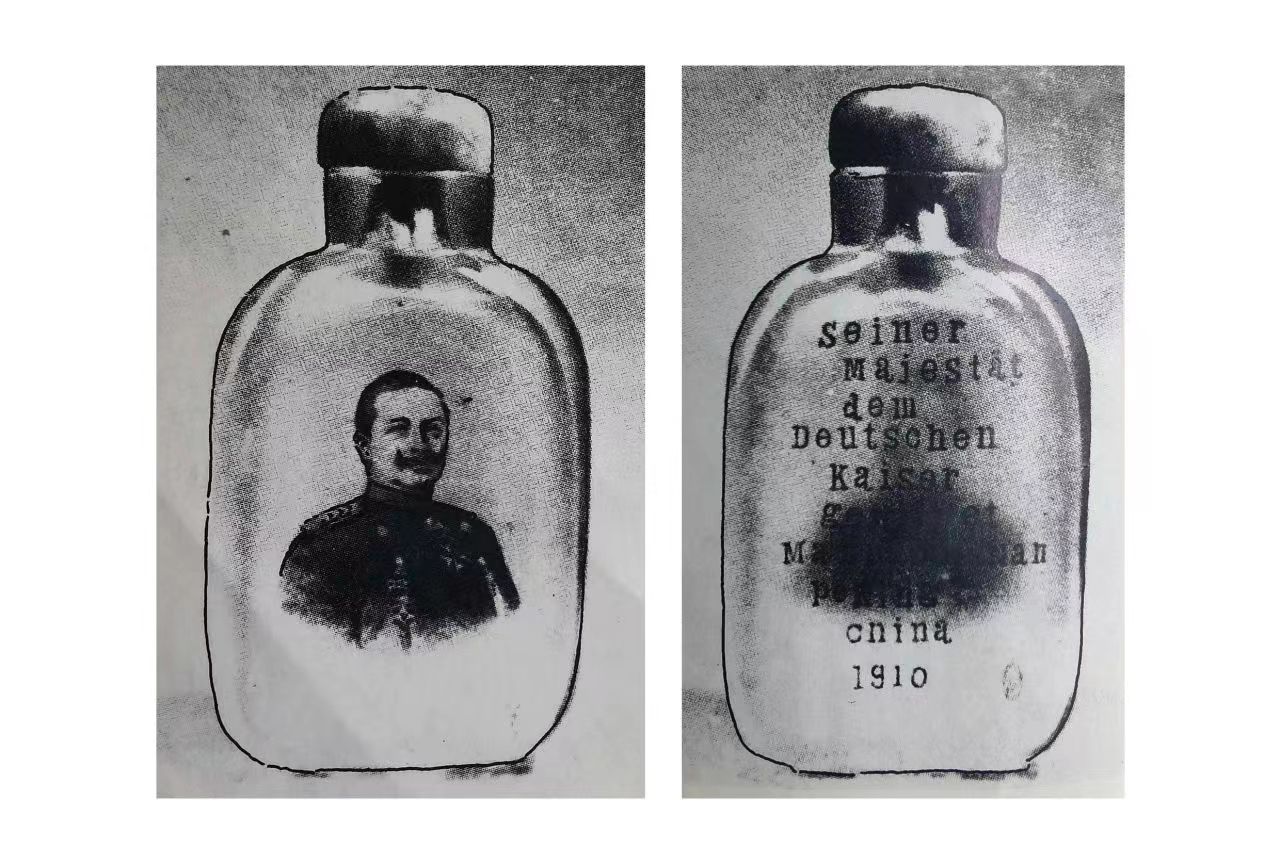
马少宣绘 德国国王肖像内画壶
Contemporary master Wang Xisan, especially good at portrait pots, he created the ‘Qing dynasty emperor and queen portrait’ pots and forty pieces of ‘U.S. Presidential Portrait’ pots in the shape of both God, can be called a masterpiece.
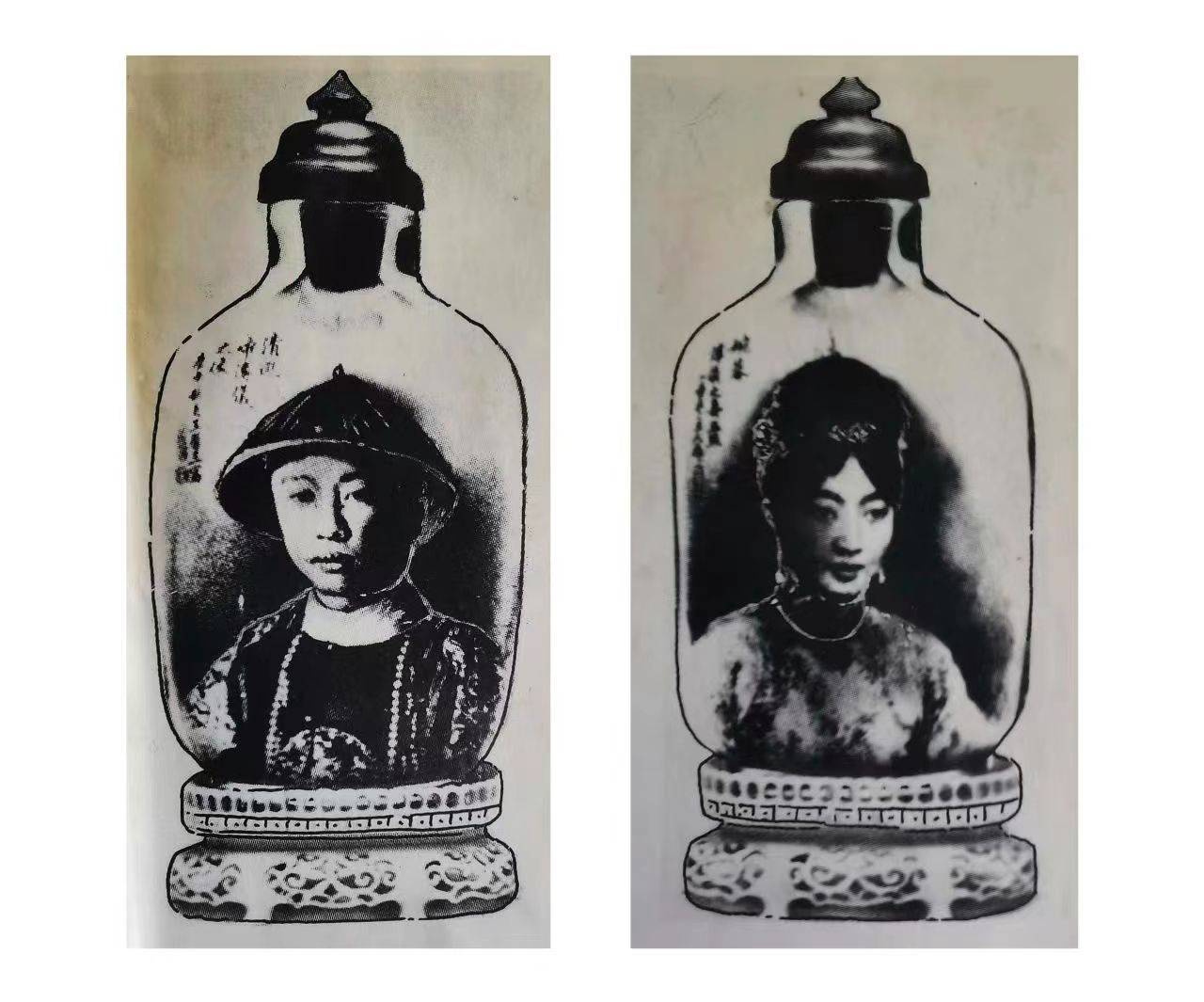
王习三绘 溥仪 婉容肖像内画壶
In April 1984, President Reagan visited China, Wang Xisan in the name of China Arts and Crafts Society Snuff Bottle Research Association, presented President Reagan with a painted portrait of himself inside the painting pots, by the Ministry of Foreign Affairs Protocol Department forwarded to President Reagan. President Reagan after returning home, but also specially wrote to express gratitude and appreciation.
In the ancient colourful arts and crafts, the snuff bottle is not eye-catching, it is not produced in the early years, but the Chinese snuff bottle but in a short period of time popular all over the world, each country's royal family, aristocrats are fascinated by it.
The Chinese were probably more enthusiastic about the making of snuff bottles than the snuff itself, and a remarkable number of snuff bottles survive in the Qing dynasty, most of them unused. These snuff bottles were used as works of art and playthings to give to friends and family and to reward ambassadors, with their own practical function taking a back seat.
Such as the ‘Qing Historical Manuscript’ records, the first year of Jiaqing, the Qing Emperor in Ning Shou Palace held a grand scale ‘thousand old man banquet’, the banquet Qing Emperor special snuff bottles rewarded to foreign envoys.
Small snuff bottle embodies the learning is amazing and extensive, it includes the world geography, botany, medicine, theology, history, religion, folklore, economy, handicrafts, foreign trade, cultural exchanges and so on.
Tobacco and snuff, originally imported from the Americas, were localised and developed in China, culminating in the creation of the snuff bottle, which is a blend of painting, calligraphy, and a variety of crafts. The Chinese took the art of snuff bottles to the highest level and created a worldwide trend of collecting and appreciating the art of Chinese snuff bottles, which is still going strong today.
奉华堂馆藏部分鼻烟壶赏析
